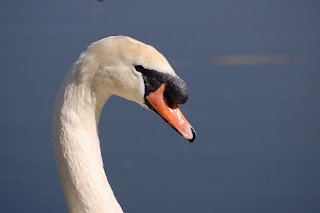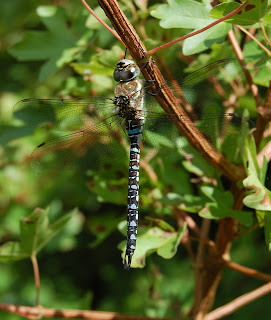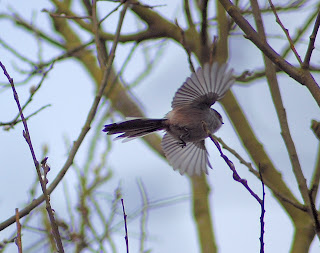As we go about our daily lives we are constantly scanning around us, looking but never really seeing. For the vast majority of people, lives are too busy to stop and actually SEE what it is we are looking at.
Let me give you an example here, how many of you would have seen this Grass Hopper?
The reason I spotted this Grass Hopper is because I wasn't just looking AT the undergrowth, but was looking INTO it. I will often spend an hour or more just slowly walking maybe 100 metres peering into Trees,Bushes, Undergrowth etc.. There are so many incredible things around us that we just don't register. Most people will have access to a green area somewhere, maybe a Wood, or a Meadow or a Local Park or even your own Garden. Get out there and spend time actually looking and seeing the amazing flora and fauna that surrounds us all.
One of my pet hates are people that kill insects like Bees and Wasps because they are scared of them, I understand that some people are allergic to their stings, but in the main part they are killed 'just beacause', My philosophy is..'If you can't make it, don't break it'. One of my favourite things to do during the Spring and Summer season is to pet Bees, Yes you read that right I said 'PET Bees', Picking up a Bee and inspecting it at close quarters is an amazing experience and one that I would recommend to anyone (except those with an allergy to their stings).
Some more amazing Insects...
The Blue Damselfly
Hawker (Aeshna Cyanea)
I know a lot of people struggle to get a decent picture of Damselfly's as they dart around so fast, but if you stop and watch them you will see that they always return to the same resting place, so to get a picture all you need do is to spot their preferred resting place and focus on that, then it's just a matter of waiting.
A while ago I was at a local nature reserve when I noticed a Hornet on a leaf, or at least that's what I thought I was seeing, This is what I saw..
Hornet? No! It is in fact a Hornet Moth, This is a little seen Moth and it relies on it's likeness to a Hornet to protect it from predators. The way to tell that this is in fact a Moth is by looking at the antennae, they have a feathery look which is indicative of a Moth. (Butterflies have stalk like antennae)
But what is the Moth doing? You have all LOOKED at the picture, but how many have actually seen what makes this picture even more special? Have you seen it yet? No? OK, I will tell you, if you look at it's rear end you will see that it is in fact in the process of laying eggs, a perfect example of looking but not seeing.
As I have shown you all my Hornet Moth I guess I should also share some of my Butterfly's with you as well, but when you look at them take time to see the intricacies of their wings, the shapes, the colours, Look at the antennae, the hairs on their Thorax, all the little wonderful details you may have overlooked in the past. And when you have finished take time to say thank you to your God (or Gods) for all the wonderful things that surround us all. Gatekeeper
Common Blue
Peacock
Comma
Black veined White
Painted Lady
Orange Tip
Small Tortoiseshell
Speckled Wood
Red Admiral
Well I have rambled on enough for Today, I kinda get carried away when talking about wildlife, Thanks for reading and I hope that I have inspired at least some of you to take a closer look at the world that surrounds you.



















































